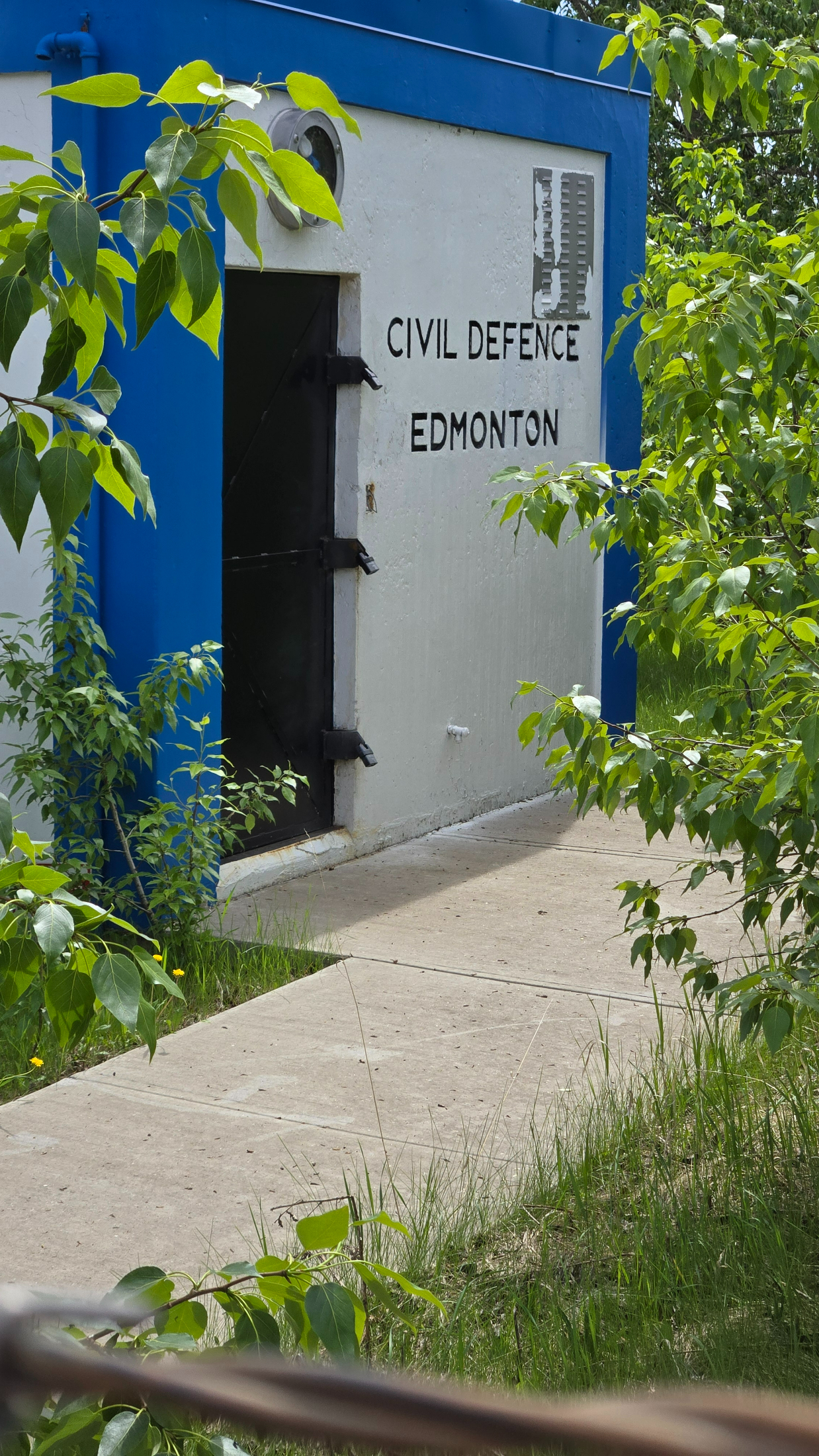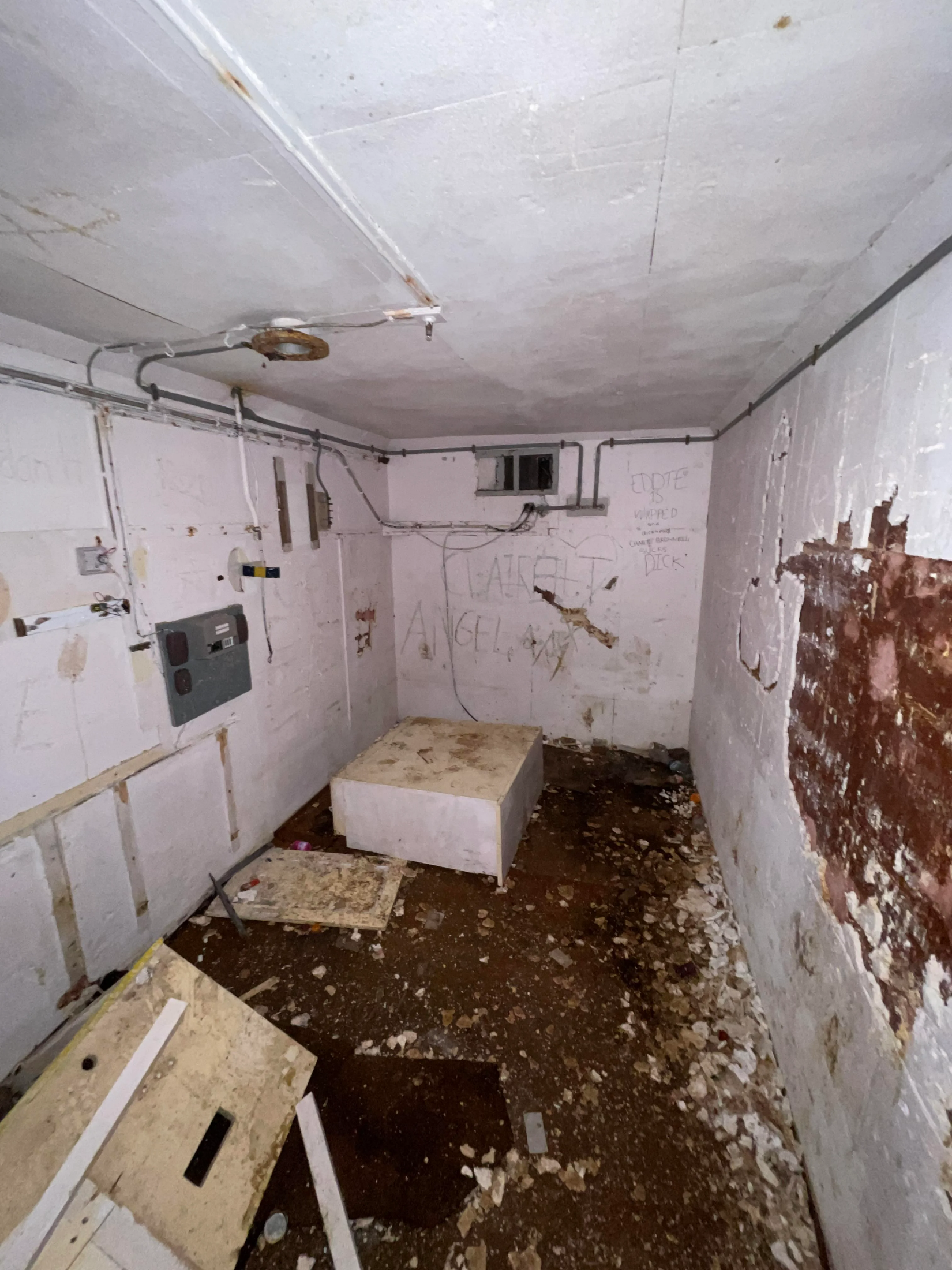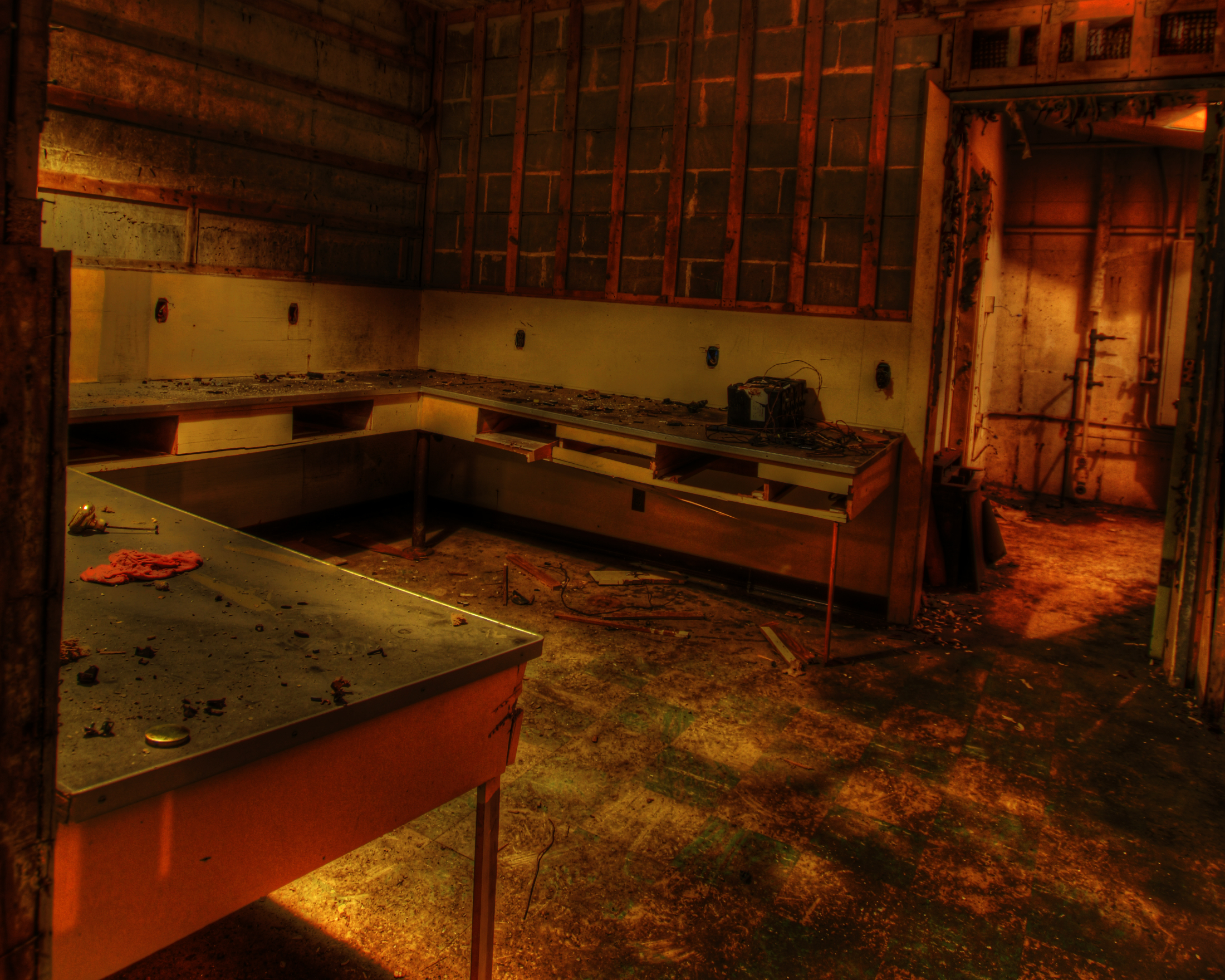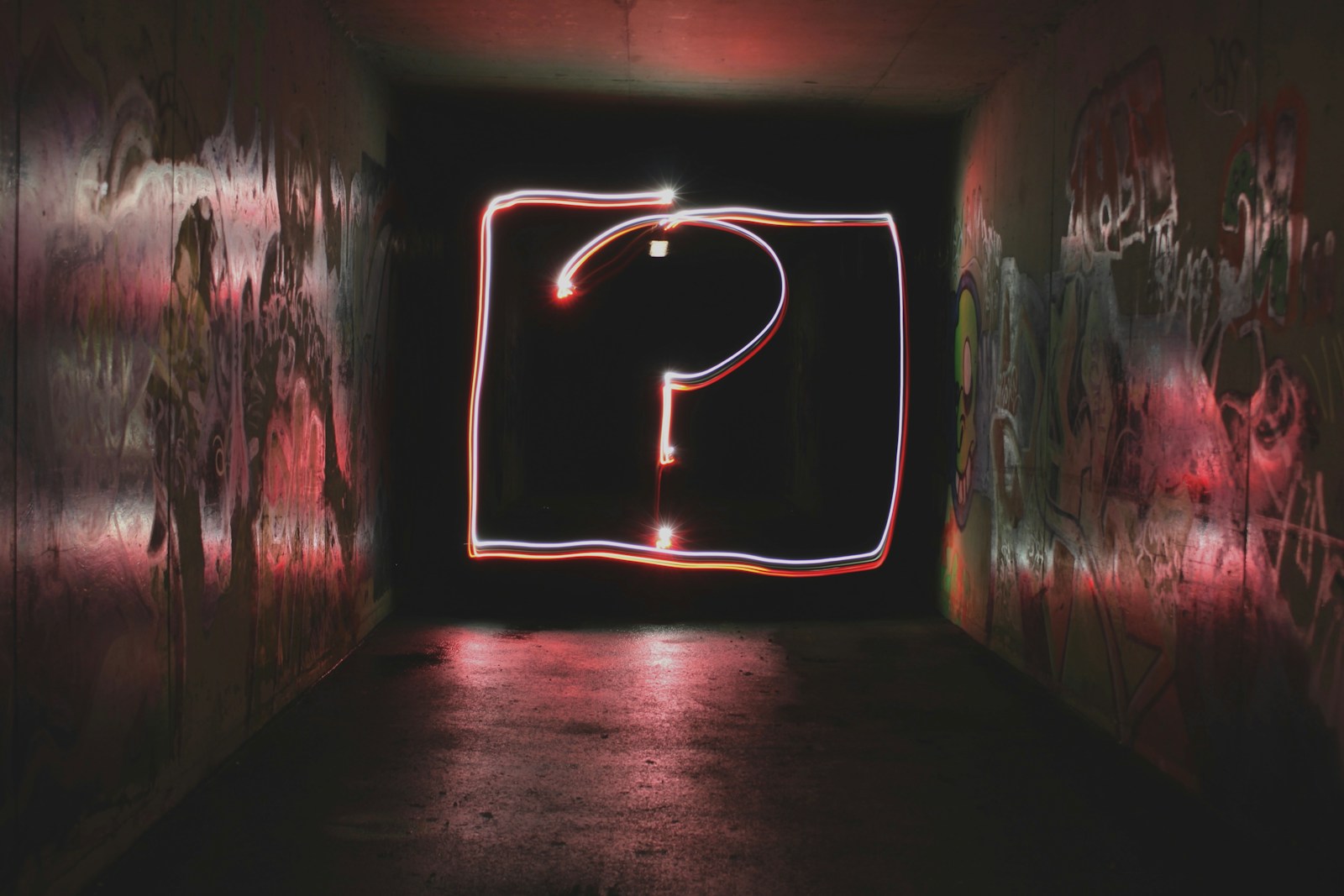If you commute from downtown to West Edmonton, you’ve probably driven past it hundreds of times. On the north side of Mackenzie Ravine, just to the west of 142 Street, lies a hidden relic from one of the most tense periods in modern history. Built during the height of the Cold War in 1953, Edmonton’s civil defence bunker is a long-abandoned, reinforced command centre designed to house the Mayor and Council in the event of nuclear war. It wasn’t made as a long term shelter but rather a space for the city’s management to remain safe from fallout for up to two weeks. Though few Edmontonians even know it exists, the bunker offers a fascinating glimpse into a time when governments seriously prepared for the possibility of global thermonuclear war.
Let’s take a deep dive into the history, architecture, and uncertain future of Edmonton’s Cold War bunker — a story that’s part spy novel, part time capsule, and entirely local.

A Cold War Stronghold Beneath the City
Constructed just 9 years after World War 2, Edmonton’s fallout shelter was one of several underground Emergency Government Headquarters commissioned by the federal government. Often referred to as “Diefenbunkers” — a nickname derived from then-Prime Minister John Diefenbaker — these structures were intended to ensure the continuity of government should a nuclear attack disable Canada’s political centres.
While Carp, Ontario’s Diefenbunker is now a museum and national historic site, Edmonton’s version was more discreet. Hidden inside a plain, cinder block building in the city’s northwest industrial area, the shelter was built to be unobtrusive — but beneath the modest exterior was a hardened bunker, equipped with all the tools needed to operate in a radioactive world.
What Was Inside?
Though now stripped of much of its original equipment, the Edmonton bunker was originally a fully functional command post. Its features included:
Reinforced concrete walls and blast-proof architecture
Independent air filtration systems to keep occupants alive through radioactive fallout
Decontamination showers for those entering from contaminated zones
Communication centres for coordinating emergency response and military support
Supplies and rations to support dozens of government and military personnel for an extended period
Spanning about 2,600 square feet, the underground facility could support up to 36 people for several weeks in isolation. Its ceilings rose to eleven feet high, and its design prioritized both survivability and functionality under extreme stress.

A Forgotten Chapter of Edmonton History
Despite the scale of its purpose, the Edmonton bunker never saw active use. As Cold War tensions cooled and civil defence strategies shifted in the 1970s and ’80s, the facility was gradually mothballed and eventually abandoned.
For years, it quietly deteriorated — unnoticed by most and unknown to many. But in 2017, the Canadian Civil Defence Museum and Archives, a local nonprofit group, stepped in and acquired the site. Their goal was ambitious: preserve the site, restore it, and eventually open it to the public as a museum of Edmonton’s Cold War heritage.

Restoration Efforts — and a Long Pause
As of 2025, however, there has been no publicly confirmed progress on the restoration or public accessibility of the bunker. The last official update was in 2017, when the museum first announced their plans. Since then, no construction activity or announcements have been made available, and the facility remains closed to the public.
While public curiosity about the bunker remains high — with occasional social media features and historical video tours generating renewed interest — the site’s future is currently in limbo. Anyone looking for the most up-to-date information is encouraged to contact the Canadian Civil Defence Museum and Archives directly.

Why It Still Matters
The Edmonton bunker is more than just a Cold War oddity — it’s a time capsule from an era when the world stood on the brink. It speaks to the seriousness with which Canada and its cities like Edmonton prepared for the possibility of all-out nuclear war.
In an era of fast-moving digital threats and geopolitical uncertainty, this 1950s bunker reminds us of a different kind of fear — and the massive, behind-the-scenes infrastructure built to defend against it.

Frequently Asked Questions (FAQ)
Q: Where is the Edmonton fallout shelter located?
A: It is located in northwest Edmonton, near industrial properties. The exact address is not widely shared to preserve the site’s condition.
Q: Was this shelter meant for the public?
A: No. Like other Diefenbunkers, this facility was built to house government and military personnel only. And really, if the bombs were going off, it wouldn’t matter much anyway as Edmonton was home to one of Canada’s largest military bases at the time, CFB Edmonton. They wouldn’t be sending just one nuke. Fun right!?
Q: Is it currently open to the public?
A: No. As of 2025, the site remains closed, with no confirmed restoration progress since it was acquired in 2017.
Q: Who owns the bunker now?
A: The Canadian Civil Defence Museum and Archives currently owns the site.
Q: Are there tours or events planned?
A: None have been announced. Interested parties should contact the museum directly for updates.
Q: What’s the historical significance of this bunker?
A: It’s one of a network of Cold War-era bunkers meant to ensure government continuity in case of a nuclear attack — and it represents a unique piece of Edmonton's hidden history.
Conclusion: A Cold War Mystery Waiting to Be Rediscovered
Though sealed and silent today, Edmonton’s Cold War bunker once stood as a vital part of Canada’s emergency planning. Its story — of fear, engineering, and forgotten history — is still being written. With enough interest and support, perhaps one day this Cold War relic will reopen its blast doors and welcome Edmontonians eager to learn about the lengths their city once went to protect them.
Until then, it remains one of the city’s most compelling, least-known landmarks — hiding in plain sight.
Looking for more hidden gems and local stories from Edmonton? Subscribe to my newsletter or explore more at pabianrealty.ca/blog, where I highlight the places, people, and history that make Edmonton more than just a city — it’s a story worth telling.
Looking to buy? Sell? Tour? Call Mike Pabian today at 780-232-2064. He knows Edmonton like few others do.

